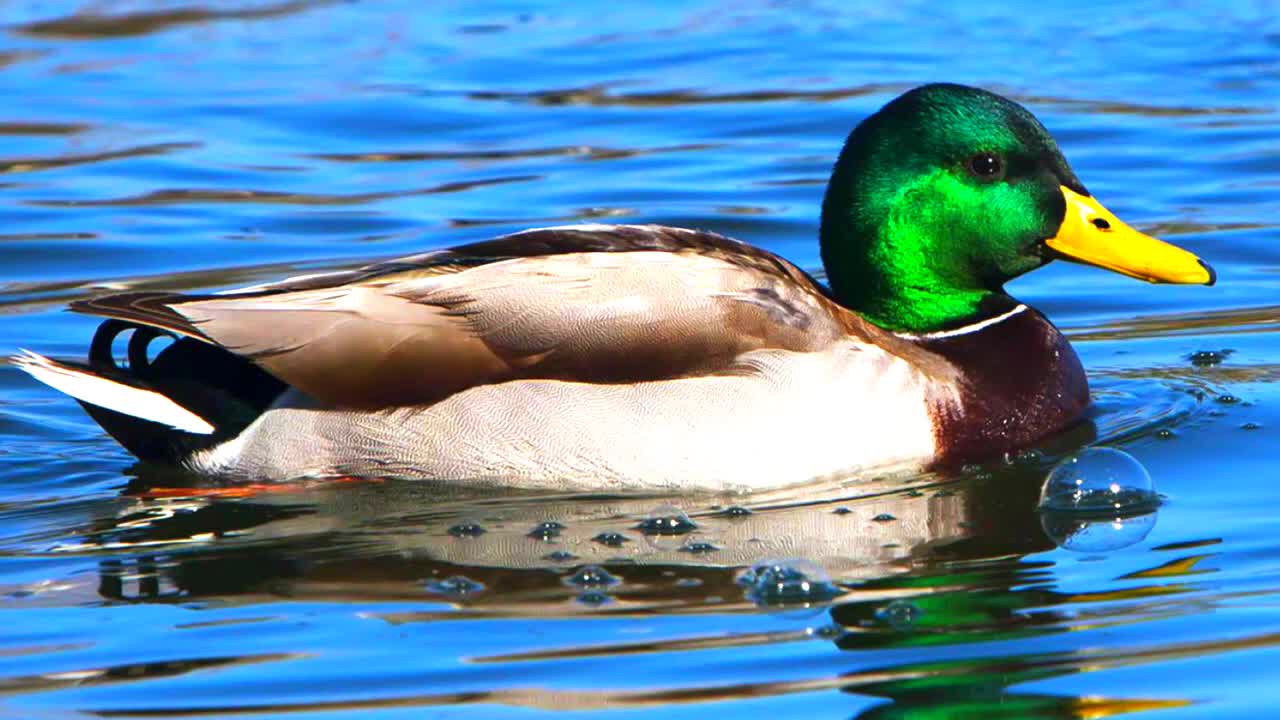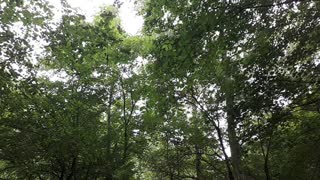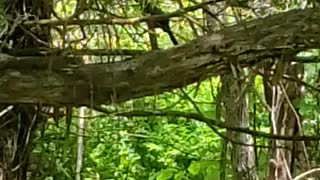Premium Only Content

Mallard duck Call/Song/Sound - Chirping/Singing Birds 2021
he mallard (/ˈmælɑːrd/ or /ˈmælərd/) (Anas platyrhynchos) is a dabbling duck that breeds throughout the temperate and subtropical Americas, Eurosiberia, and North Africa and has been introduced to New Zealand, Australia, Peru, Brazil, Uruguay, Argentina, Chile, Colombia, the Falkland Islands, and South Africa. This duck belongs to the subfamily Anatinae of the waterfowl family Anatidae. The male birds (drakes) have a glossy green head and are grey on their wings and belly, while the females (hens or ducks) have mainly brown-speckled plumage. Both sexes have an area of white-bordered black or iridescent blue feathers called a speculum on their wings; males especially tend to have blue speculum feathers. The mallard is 50–65 cm (20–26 in) long, of which the body makes up around two-thirds the length. The wingspan is 81–98 cm (32–39 in) and the bill is 4.4 to 6.1 cm (1.7 to 2.4 in) long. It is often slightly heavier than most other dabbling ducks, weighing 0.72–1.58 kg (1.6–3.5 lb). Mallards live in wetlands, eat water plants and small animals, and are social animals preferring to congregate in groups or flocks of varying sizes. This species is the main ancestor of most breeds of domesticated ducks.
The female lays eight to 13 creamy white to greenish-buff spotless eggs, on alternate days. Incubation takes 27 to 28 days and fledging takes 50 to 60 days. The ducklings are precocial and fully capable of swimming as soon as they hatch.
The mallard is considered to be a species of least concern by the International Union for Conservation of Nature (IUCN). Unlike many waterfowl, mallards are considered an invasive species in some regions. It is a very adaptable species, being able to live and even thrive in urban areas which may have supported more localised, sensitive species of waterfowl before development. The non-migratory mallard interbreeds with indigenous wild ducks of closely related species through genetic pollution by producing fertile offspring. Complete hybridisation of various species of wild duck gene pools could result in the extinction of many indigenous waterfowl. The wild mallard is the ancestor of most domestic ducks, and its naturally evolved wild gene pool gets genetically polluted by the domesticated and feral mallard populations.
#Mallardducks #Birdsong #Birdsound #Birdssounds
-
 0:44
0:44
ShaghAlavi
4 years agoThe pleasant sound of birds singing
141 -
 1:30
1:30
ajlambert5
4 years agoThe sound of chirping birds
22 -
 56:27
56:27
Sarah Westall
7 hours agoEnd of Aging, Hydrogen Bomb Research, Serial Killers & Violent Behavior, Bipolar Research w/Dr Walsh
37.2K5 -
 4:36:53
4:36:53
MattMorseTV
9 hours ago $15.67 earned🔴Sunday Gaming🔴
63.3K5 -
 2:31:16
2:31:16
Joker Effect
5 hours agoINTERVIEWING Rumble Gaming community members: Viewbotting and how they see the current landscape.
24.5K3 -
 1:45:53
1:45:53
Nerdrotic
8 hours ago $16.05 earnedUnravelling the Secrets of Skinwalker Ranch | Forbidden Frontier #115
88.4K6 -
 41:56
41:56
Athlete & Artist Show
9 hours ago $1.31 earnedAustin Ekeler: Going From "0 Star Recruit" To Leading The NFL In TD's, New Fan App | FROM THE VAULT
35.8K1 -
 2:46:49
2:46:49
Barry Cunningham
14 hours agoNOW THEY FEAR US! | RFKJR STRIKES BACK | JD VANCE ON PRESIDENT TRUMP | AND MORE NEWS!
77.6K55 -
 8:13:45
8:13:45
Spartan
9 hours agoCharlotte Qualifier watch party + Ranked and Expedition 33
35.2K1 -
 6:09:54
6:09:54
bigbossrobinson
12 hours agoLIVE - DOUBLE IMPACT - RESIDENT EVIL 4 & METAL GEAR SOLID Δ: SNAKE EATER
36.7K2